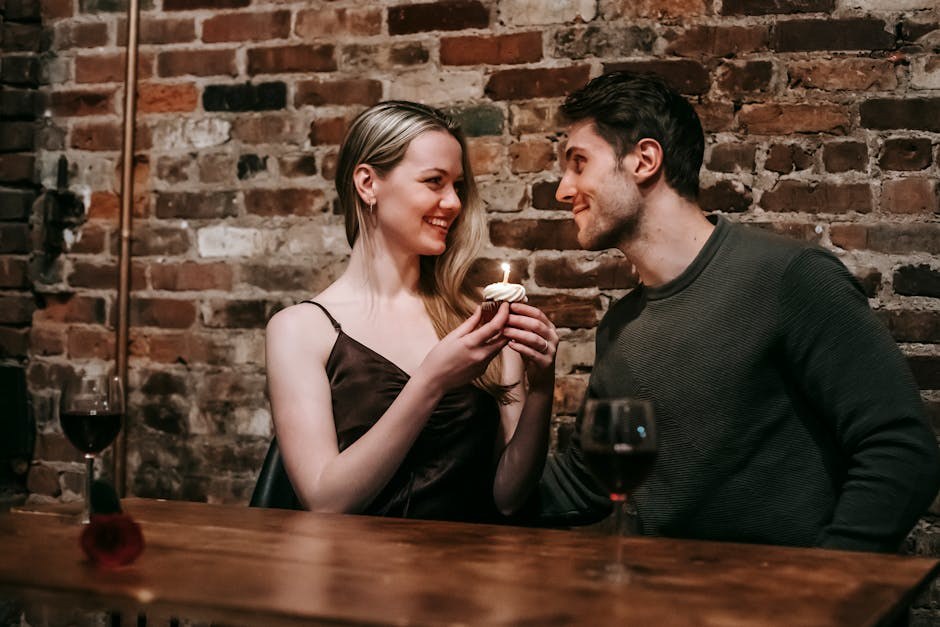If you’ve been swiping for what feels like forever and nothing meaningful has landed, you’re not alone. Many people sign up to dating apps expecting a steady stream of chemistry and conversation, only to discover a maze of half-starts, stalled chats, and mismatched expectations. The promise is tempting – a pocket-sized gateway to connection – but the reality can be more complicated. This guide unpacks why dating apps often fall short and how to recalibrate your approach so the time you invest actually points toward the kind of connection you want.
Why dating apps can feel stuck
Dating apps are tools, not magic wands. They offer access – profiles, photos, prompts – but they don’t supply the patience, empathy, and focus that turn a match into a bond. Below are some of the most common roadblocks people hit when using dating apps, along with a clearer look at how each hurdle quietly shapes your experience.
-
Sky-high expectations bend your perspective. If every match on dating apps arrives burdened with the hope of instant fireworks, you set yourself up to overlook nuance. A decent chat becomes “the one,” and a normal first meeting gets recast as unforgettable simply because you invested time. When reality doesn’t match the fantasy, the letdown stings more than it needs to – and that sting makes the next swipe feel heavier.

-
Rock-bottom expectations drain momentum. After a few disappointments, it’s easy to flip the script and expect nothing from dating apps. That guarded stance might seem protective, but it quietly sabotages curiosity. You show up to conversations halfheartedly, and your energy signals indifference – a mood that makes it hard for anyone to connect with you, even if they’re a great fit.
-
Patience runs thin in a fast-gratification world. We get used to instant confirmation – messages read, orders delivered, photos liked. Dating apps don’t work like that. Connection unfolds at human speed, not app speed, and impatience can push you to burn through promising leads before they’ve had time to breathe. When you treat the process like a same-day delivery, you overlook the slow build that makes attraction sustainable.
-
High sensitivity meets low accountability. There’s nothing wrong with being sensitive – it often comes with deep empathy – but dating apps can be rough on tender feelings. The semi-anonymous environment lowers the bar for courtesy. Messages arrive curt. Replies vanish. Without the social friction of face-to-face interaction, people bow out without explanation. If you use matches as a mirror of your worth, each silence cuts deeper than it should.

-
Overthinking turns every pause into a verdict. A delayed reply becomes a rejection. A rescheduled coffee becomes a hidden agenda. Dating apps generate lots of small unknowns, and if you fill every gap with worry, you’ll exhaust yourself long before a relationship can begin. Not every hiccup hides a plot twist – sometimes a late message is just a busy day.
-
Rigid goals crowd out discovery. Walking into conversations with a fixed outcome – relationship now, nothing less – makes it hard to notice who a person actually is. Dating apps can certainly lead to commitment, but the shortest path often starts with openness. When you focus only on destination, you miss the cues in the present that tell you whether a connection feels easy, kind, and genuinely mutual.
-
Little white lies create big friction. Rounding up your height, hiding your deal-breakers, or downplaying your intentions might earn a match, but it costs trust. Dating apps are fragile ecosystems – clarity holds everything together. When your profile and your behavior don’t align, conversations wobble and fall apart after a few exchanges.

-
Option overload freezes decision-making. The endless feed on dating apps can paralyze. With so many profiles, you start hovering in a loop – swiping, matching, circling back – without choosing where to invest attention. That indecision leads to surface-level interactions that never gain depth, because depth requires selecting someone and gently closing the door on all the other maybes.
-
Comparison steals confidence. Swipe culture is built on side-by-side appraisal – who’s more interesting, more clever, more photogenic. That habit doesn’t stop at other people; it rebounds onto you. When you measure yourself against the highlight reels of strangers on dating apps, self-doubt creeps in. Low confidence dulls your humor, shrinks your voice, and makes authentic warmth harder to convey.
-
Ghosting distorts the story you tell yourself. People vanish. It shouldn’t happen, but it does – frequently. Without a closing conversation, your brain rushes to fill the silence with the harshest explanation. Dating apps make exits effortless, and the lack of feedback makes you guess at lessons that may not exist. Sometimes the reason is simple and unrelated to you at all.
-
The greener-grass loop never ends. When choices seem limitless, curiosity never rests. You pause a promising chat because a shinier profile appears. Then that spark flickers, and you pivot again. Dating apps can turn attention into a carousel – always moving, rarely settling – and connection can’t deepen if you’re perpetually scanning for an upgrade.
-
Pickiness tightens the funnel too far. Standards are healthy. Hyper-specific checklists are not. If your criteria on dating apps exclude nearly everyone – precise height, niche hobby, rare schedule, identical taste – you might be selecting for trivia over substance. Chemistry often shows up in surprises: the person who isn’t your usual type but makes you feel unusually at ease.
-
The scorekeeping mindset flattens people. Treating dating apps like a numbers game – how many matches, how many chats, how many first dates – reduces conversations to tallies. You start optimizing for volume instead of resonance. Real connection isn’t about metrics – it’s about how you feel during and after you talk with someone, and whether that feeling keeps pulling you back.
-
Endless first dates burn energy. First meetings are exciting, but they also demand effort – planning, commuting, small talk, nerves. If dating apps keep you stuck in a loop of introductions, you might confuse novelty with progress. At some point, directing energy toward deepening one promising thread restores more joy than stacking another coffee on the calendar.
-
Swipe-without-strategy hides good matches. Random swiping feels effortless, but it blurs your attention. If you fixate on one trait – a hobby, a profession, a single photo – you might overlook people whose overall vibe fits you beautifully. Dating apps reward intention. A simple system – read prompts, notice consistency, send a specific opener – catches signals you’d otherwise miss.
-
Profiles and photos undersell who you are. Think of your profile as an introduction, not a résumé. If your photos are generic or your prompts are vague, dating apps will reflect that with low-effort replies. Clear, recent images and a few concrete snapshots of your life – what lights you up, how you spend a Sunday, what you’re curious about – invite the right people to lean in.
-
Your vibe reads guarded or weary. Protecting your time is smart. Leading with suspicion is counterproductive. Short, clipped replies, defensive jokes, or interview-style questions can signal that you’re bracing for disappointment. Dating apps carry enough friction as it is – a little warmth, a little play, and a little patience create a safer place for connection to enter.
How to make dating apps work in your favor
Once you understand the friction points, you can redesign how you show up. None of the ideas below require gimmicks – they’re small, steady shifts that compound over time. The goal isn’t to game dating apps; it’s to create conditions where genuine interest can appear and grow.
-
Pick platforms that fit your values. Popularity alone doesn’t make a service right for you. Look for dating apps whose features and prompts encourage the kind of conversation you enjoy – whether that’s playful banter, thoughtful essays, or concise quips. When a platform’s culture matches your voice, you spend less energy translating yourself and more energy connecting.
-
Shift promising chats offline – safely and soon. If the exchange flows, suggest a low-pressure step out of the app: a call, a short video chat, or a daylight coffee. Dating apps are excellent for discovery, but chemistry lives in real-time interaction. Moving off the screen gives both of you a clearer read on rhythm and interest. Prioritize safety – public places, shared details with a friend – while keeping the tone relaxed.
-
Guard your private information. Curiosity is not entitlement. Share at a pace that feels comfortable, especially early on. On dating apps, boundaries are a form of self-respect – they help you stay present, observant, and composed, which in turn helps you notice how someone responds to “no” and to your pace.
-
Trust your internal alarms. If a detail doesn’t add up or a joke lands mean, pay attention. You don’t need a courtroom’s worth of evidence to step back. Dating apps introduce you to strangers – your instincts are a protective compass. When something feels off, you can pause, clarify, or walk away without apology.
-
Use the tools: block and report when needed. You’re not obligated to manage someone else’s behavior. If a user crosses a line, lean on the platform’s safety features. Dating apps work better for everyone when abusive or deceptive accounts are removed, and protecting your space frees your attention for people who show care and reciprocity.
-
Be clear about what you want – and say it kindly. Fun, companionship, something long-term – there’s no wrong answer, only mismatched ones. Stating your intentions in your profile and early messages filters in compatible people and spares you both from avoidable confusion. Clarity on dating apps isn’t bluntness – it’s respect.
-
Give near-misses a fair chance. If someone is slightly outside your usual type but checks many boxes – shared humor, compatible lifestyles, easy conversation – explore it. Dating apps make first impressions quick; don’t let speed eclipse substance. Sometimes the second look is where attraction wakes up.
-
Be thoughtful with paid features. Premium tiers can be useful – visibility boosts, advanced filters – but they’re supplements, not solutions. If you try them, set time-bound experiments and take breaks. Your well-being matters more than squeezing extra performance from dating apps.
-
Reframe rejection as redirection. A “no” saves you time. A ghost prevents a mismatch from dragging on. It still stings, but it needn’t define you. On dating apps, many endings aren’t about your value – they’re about timing, readiness, and fit. Let closed doors point you toward places where you’re wanted.
-
Mind your outlook – it colors every message. If your inner script says “this won’t work,” your words and tone will echo it. Try a gentler premise: “I’m here to meet good people and see where a few conversations lead.” Dating apps respond to the energy you bring; optimism makes you bolder and more generous, which makes you more magnetic.
-
Keep it light enough to be fun. Intention and play are not opposites. Bring curiosity. Ask about specifics in someone’s profile. Share small, real snapshots of your day. When your presence feels easy – not effortful – dating apps become less of a grind and more of a series of human moments that can grow into something steady.
Practical refinements for your profile and process
-
Refresh your photos with context. Clear, recent images matter. Include one simple headshot, one relaxed full-body shot, and a couple of candid scenes – cooking, hiking, reading at a café. Dating apps revolve around first glances, and context tells a richer story than a lineup of car selfies.
-
Write prompts that start conversations. Replace clichés with specifics: a book that shaped you, a dish you’ve mastered, a tiny hill you’ll die on. Dating apps thrive on hooks – a vivid detail invites a vivid reply and makes it easier for someone to message you with something more than “hey.”
-
Send openers that show you actually read. Quote a line from their prompt and add a question. Notice a hobby and connect it to yours. When you demonstrate attention, you stand out in the scroll. On dating apps, specificity is the sincerest form of flattery.
-
Decide how you’ll pace new chats. To avoid overload, cap active conversations. For example, keep a small handful open so you can be present with each. Dating apps become calmer when you trade breadth for depth.
-
Set micro-goals you control. You can’t control replies, but you can control outreach. Aim to send a certain number of thoughtful messages each week or to update a photo each month. On dating apps, consistency beats bursts of frantic effort.
-
Notice how you feel after you talk. Do you feel lighter, seen, curious? Or drained and tense? Your body is great at reading fit. Use those signals to guide whether you suggest a call or ease out. Dating apps are best when they amplify your sense of self rather than shrink it.
Putting it all together
None of this is about perfection – it’s about alignment. When the way you use dating apps reflects who you are and what you want, the experience changes. You approach profiles with warmth instead of urgency. You let go of matches that don’t reciprocate. You move a promising conversation into real life – safely, kindly, and sooner rather than later. The result isn’t instant romance; it’s a smoother path where the right people can actually find you.
If dating apps still don’t feel like home
It’s okay to prefer organic introductions – through friends, hobbies, work, or community events. You can treat dating apps as one channel rather than the only channel. Step back when the process starts to feel mechanical, return when you have fresh energy, and remember that connection is bigger than any interface. Whether your next partner appears through a swipe or a serendipitous conversation, the same skills apply – clarity, kindness, steady attention, and a willingness to show up as you are.
Quick recap – gentle shifts that matter
-
Lead with realistic optimism and patience – dating apps are a starting line, not a finish line.
-
Focus on depth over volume – fewer, better conversations beat constant churn.
-
Keep boundaries intact – safety and privacy come first, always.
-
Be candid about your intentions – clarity filters in compatible people.
-
Take small steps into real-time interaction – phone, video, or coffee – to let chemistry actually show up.
Approach the process with curiosity and care, and you’ll convert the noisy scroll of dating apps into a quieter, kinder space where genuine interest can take root. The technology opens the door – the way you use it invites the right person to walk through.